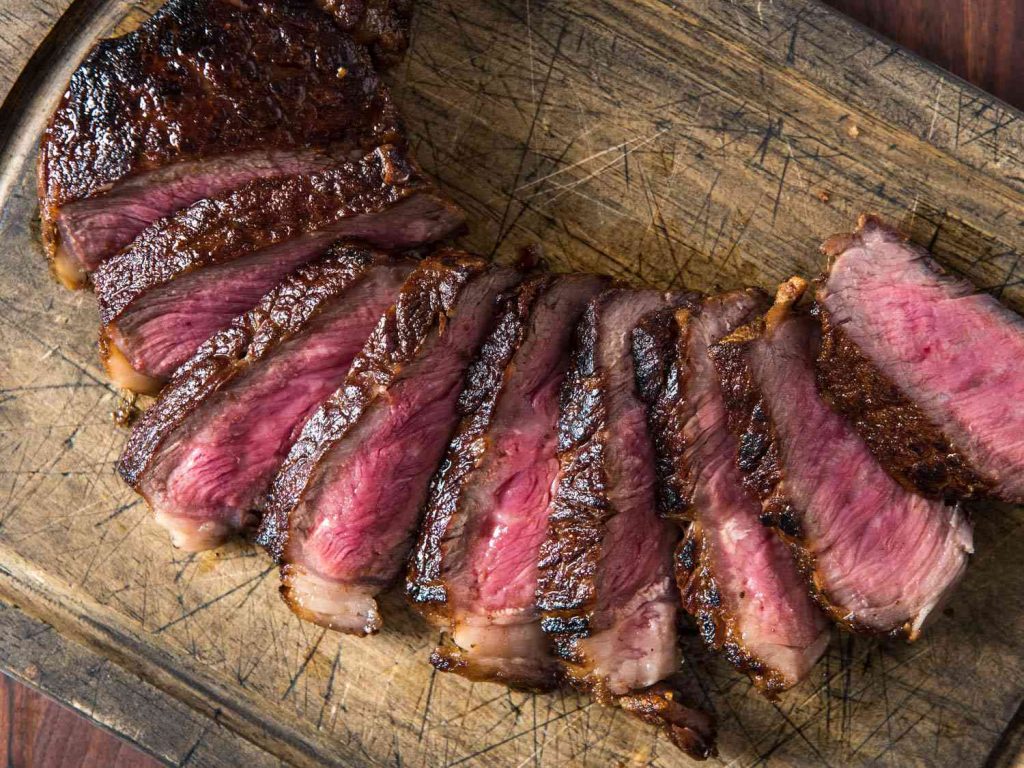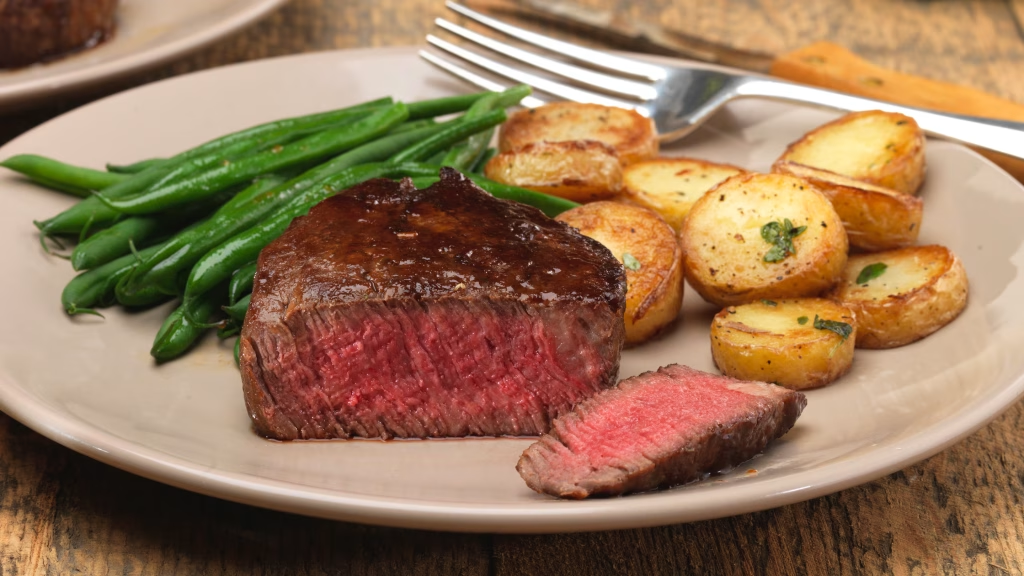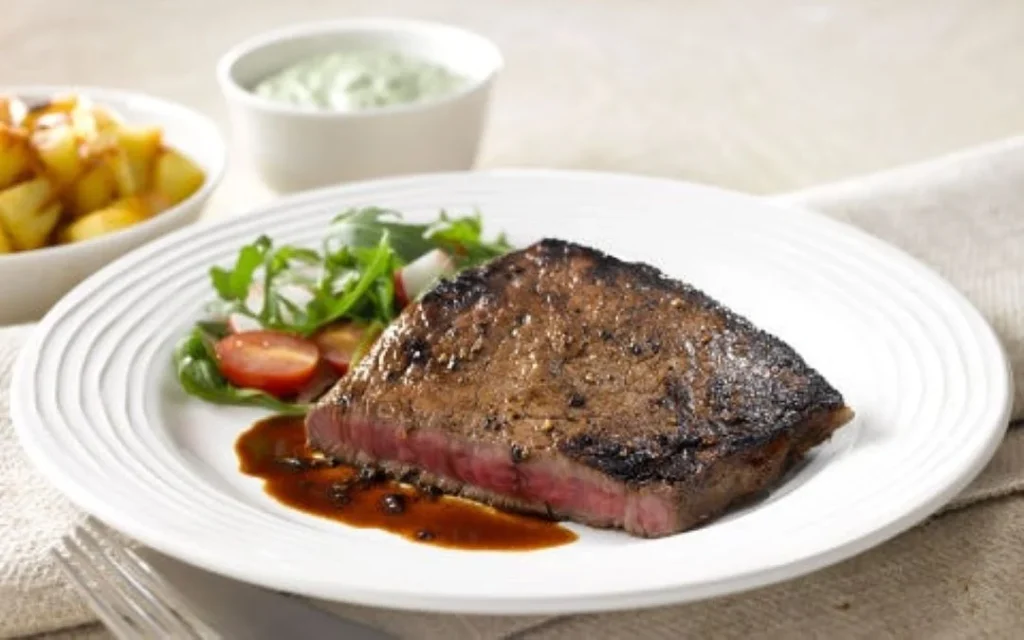Blog
The Science Behind Perfectly Cooked Steak
Cooking the perfect steak is an art form that requires both skill and knowledge. Whether you’re a seasoned chef or a home cook, the goal is always the same: to achieve that ideal balance of a crispy, flavorful crust and a juicy, tender interior. But behind every perfectly cooked steak, there’s science at play. Understanding the science behind steak cooking not only elevates your culinary skills but also enhances your appreciation for the intricate processes that make steak so delicious.
In this article, we’ll dive into the science behind cooking the perfect steak, from choosing the right cut to mastering the cooking technique. By understanding key concepts like temperature, Maillard reaction, and resting time, you’ll be able to create the steak of your dreams every time.
1. The Importance of Choosing the Right Cut
The journey to a perfectly cooked steak begins long before it hits the pan or grill. The first step is selecting the right cut of meat. Different cuts of beef have varying textures, flavors, and cooking methods that can influence how the steak turns out. Understanding the differences between these cuts is essential for choosing the one that suits your preferences.
Popular Cuts and Their Characteristics:
- Ribeye: Known for its rich marbling (the fat within the meat), ribeye steaks are tender, juicy, and packed with flavor. The fat ensures a moist steak and contributes to a well-caramelized crust when cooked properly.
- Filet Mignon: This cut comes from the tenderloin and is known for being extremely tender with a mild flavor. While it lacks the same amount of fat as the ribeye, it makes up for it in tenderness.
- New York Strip: This cut offers a balance of tenderness and flavor, with less fat than ribeye but still enough to keep it juicy during cooking.
- T-bone/Porterhouse: These cuts feature a combination of both a strip steak and a tenderloin, offering the best of both worlds—flavorful and tender with a bone-in presentation.
By choosing a cut with the right balance of fat and muscle for your taste, you set yourself up for success in the kitchen. Fat, especially in cuts like ribeye, plays a key role in flavor and texture, while lean cuts like filet mignon prioritize tenderness.
2. The Maillard Reaction: The Secret to That Golden Crust
The Maillard reaction is the magical process responsible for the savory flavors and the golden-brown crust that we all love on a steak. This chemical reaction occurs when proteins and sugars in the meat react to heat, creating a complex mixture of new flavors, aromas, and colors.
How the Maillard Reaction Works:
- When the steak is exposed to high heat, the proteins in the meat break down, and amino acids (building blocks of protein) interact with sugars to form hundreds of new compounds.
- These compounds contribute to the rich, deep flavor and the crispy crust that forms on the surface of the steak. The process begins at around 300°F (150°C) and intensifies with heat.
- The result is that irresistible caramelization and browning that make steak so delicious.
To achieve a perfect Maillard reaction, it’s essential to cook your steak at a high enough temperature. Whether you’re pan-searing or grilling, a hot surface helps to rapidly brown the meat, creating that perfect crust while keeping the inside tender and juicy.

3. The Role of Heat: Temperature Matters
Temperature is one of the most critical factors in cooking the perfect steak. Not only does it affect how the meat cooks, but it also determines the doneness, texture, and juiciness of the final dish.
Internal Temperature and Doneness Levels: The level of doneness of your steak is defined by its internal temperature. Here’s a general guide for steak temperatures:
- Rare (120-130°F / 49-54°C): Cool, red center with a soft, tender texture.
- Medium Rare (130-140°F / 54-60°C): Warm, red center with a slightly firmer texture but still tender and juicy.
- Medium (140-150°F / 60-66°C): Pink center with a firmer texture, less juicy.
- Medium Well (150-160°F / 66-71°C): Slightly pink center with a firm texture and minimal juiciness.
- Well Done (160°F / 71°C and above): No pink, firm, and dry texture.
For optimal flavor and tenderness, medium-rare to medium steaks are generally preferred by most chefs. However, it’s essential to use a meat thermometer to check the internal temperature and achieve the desired doneness without overcooking.
Why Resting Is Important: After cooking, it’s important to let your steak rest for a few minutes. During cooking, the heat causes the proteins in the meat to contract, forcing out juices. Resting the steak allows the juices to redistribute throughout the meat, ensuring that the steak remains juicy and tender when you cut into it.
4. The Science of Searing: High Heat vs. Low Heat
When cooking steak, achieving a crispy, flavorful crust is just as important as the perfect interior. Searing is the technique of cooking the steak at a high temperature to brown the surface. However, it’s essential to balance high heat with patience for the best results.
Searing and Caramelization:
- Searing at high temperatures allows the steak to form a caramelized exterior, creating a crisp crust that locks in the juices. This is where the Maillard reaction occurs, intensifying the steak’s flavors.
- Searing also imparts additional flavor through the process of fond—the browned bits of meat and fat that form at the bottom of the pan. These can be used to create rich sauces after cooking.
Low and Slow Cooking: While high heat is important for searing, some chefs prefer low and slow methods (such as sous-vide or oven roasting) to gradually bring the steak up to the desired temperature without overcooking the exterior. This ensures an even cook throughout the steak, especially for thicker cuts.
5. The Resting Period: Science of Juiciness
Once your steak has finished cooking, it’s tempting to cut into it immediately, but resisting the urge can make all the difference. Resting your steak for a few minutes after cooking is crucial for ensuring that it’s as juicy as possible.
Why Resting Works:
- During cooking, the heat causes the muscle fibers in the steak to contract, squeezing out moisture. When you let the steak rest, the muscle fibers relax, allowing the juices to redistribute throughout the meat.
- The length of time needed to rest depends on the size of the steak, but a general rule of thumb is to rest the steak for about 5 minutes for smaller cuts or 10 minutes for larger ones.
By allowing the steak to rest, you’ll ensure that it remains juicy and tender, and that you get the most flavor with every bite.

6. Cooking Methods: Pan-Seared, Grilled, or Broiled?
The method you use to cook your steak can influence the final product. While grilling is a favorite for many steak lovers, both pan-searing and broiling offer unique benefits. Each technique brings out different flavors and textures in the meat, and knowing when to use each method can help you master the art of steak cooking.
Pan-Searing: Pan-searing involves cooking the steak in a hot skillet, usually with a bit of oil or butter, to create a crust. This method allows for more control over the temperature and is ideal for thinner cuts or when you want to create a sauce with the fond left in the pan.
Grilling: Grilling steaks is a classic method that imparts smoky flavors and distinct grill marks. Grilling works best for thicker cuts like ribeye, T-bone, and porterhouse steaks. The open flame sears the meat, while the heat from the grill cooks the steak evenly.
Broiling: Broiling is similar to grilling, but it uses an overhead heat source instead of an open flame. This method is great for cooking steaks quickly, creating a nice crust while keeping the interior tender.
Conclusion: The Perfect Steak, Every Time
Cooking the perfect steak is both a science and an art. By understanding the processes behind temperature, searing, resting, and selecting the right cut, you can elevate your steak-cooking skills and consistently create a flavorful, tender masterpiece. With practice and patience, you’ll soon be able to cook steak like a pro, impressing friends and family with your culinary expertise. The next time you fire up the grill or heat up your skillet, remember that the key to a perfectly cooked steak lies in understanding the science behind it.


